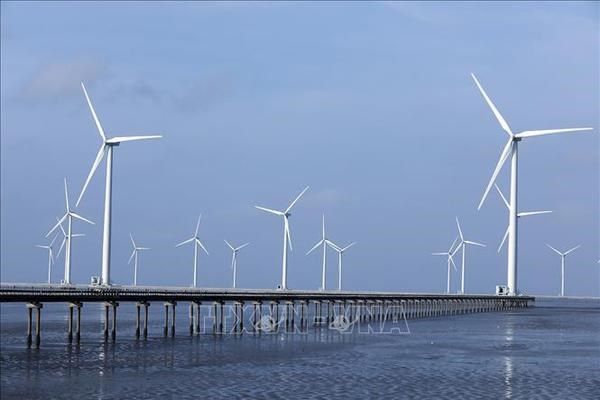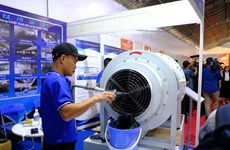Vietnam sees fastest rise in solar, wind power rate in national electricity structure in 2020: Research
The increase in the solar plus wind share of the electricity mix in Vietnam in 2020 was much faster than the pace seen in the Asia-Pacific region or the world as a whole, according to a research jointly implemented by the Australian National University, the Norwegian Institute of International Affairs, the ASEAN Centre for Energy and the National Economics University of Vietnam.
 Illustrative image (Source: VNA)
Illustrative image (Source: VNA)According to the research, Vietnam's solar and wind electricity generation rose from 4.7 TWh in 2019 to 9.5 TWh in 2020. This equaled a 1.98 percentage point increase in the share of total electricity generation.
Elsewhere in Southeast Asia, Malaysia, Singapore, and Indonesia saw smaller increases, while the solar plus wind share of the electricity mix actually declined in Thailand and the Philippines due to relatively stagnant uptake of these renewables and rapid growth in use of other electricity sources.
Since 2019, Vietnam has emerged as the leader in solar and wind electricity adoption in the ASEAN region. The country overtook Thailand and had the largest installed solar and wind capacity in 2019.
The research cited statistics from the International Renewable Energy Agency (IREA) showing that Vietnam's total capacity of solar photovoltaic (PV) reached about 16,500 megawatts (MW) by the end of 2020. This far surpassed the original 2020 target of 850 MW set by the Government of Vietnam in 2016, and is even approaching the tentative target of 18,600 MW of installed solar power capacity by 2030 that appears in the draft version of Vietnam's Power Development Plan 8.
According to the Electricity of Vietnam, more than 100,000 rooftop solar PV systems were installed in Vietnam in 2019 and 2020, which was an extraordinary achievement.
Meanwhile, installed wind power capacity reached 600 MW by the end of 2020, behind only Thailand (1,507 MW) among the ASEAN countries. In 2020, Vietnam's annual wind power capacity growth rate was 70 percent, while the other ASEAN countries did not expand their wind capacity.
Vietnam has the most ambitious wind power development plan in ASEAN, with a tentative target of 11,800 MW of wind power capacity by 2025. The targets of Thailand and the Philippines are about 3,000 MW by 2036 and 2,378 MW by 2030, respectively.
The common enabling factors for solar and wind uptake in Vietnam include political and social support, incentive instruments, supporting regulations, and overall investment attractiveness, according to the research.
Dr. Do Nam Thang from the Australian National University, a member of the research group, said that switching to renewable energy is an obvious trend, especially when financial sources for fossil fuels are being cut down globally. He held that policy determination and social consensus are among key factors behind Vietnam’s success in the field./.













